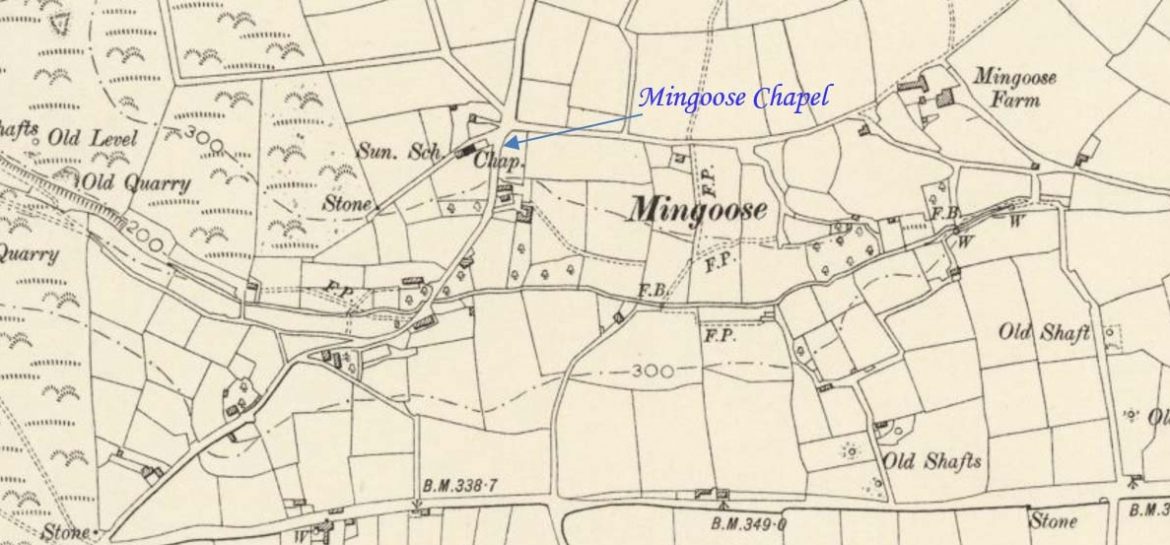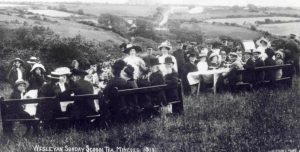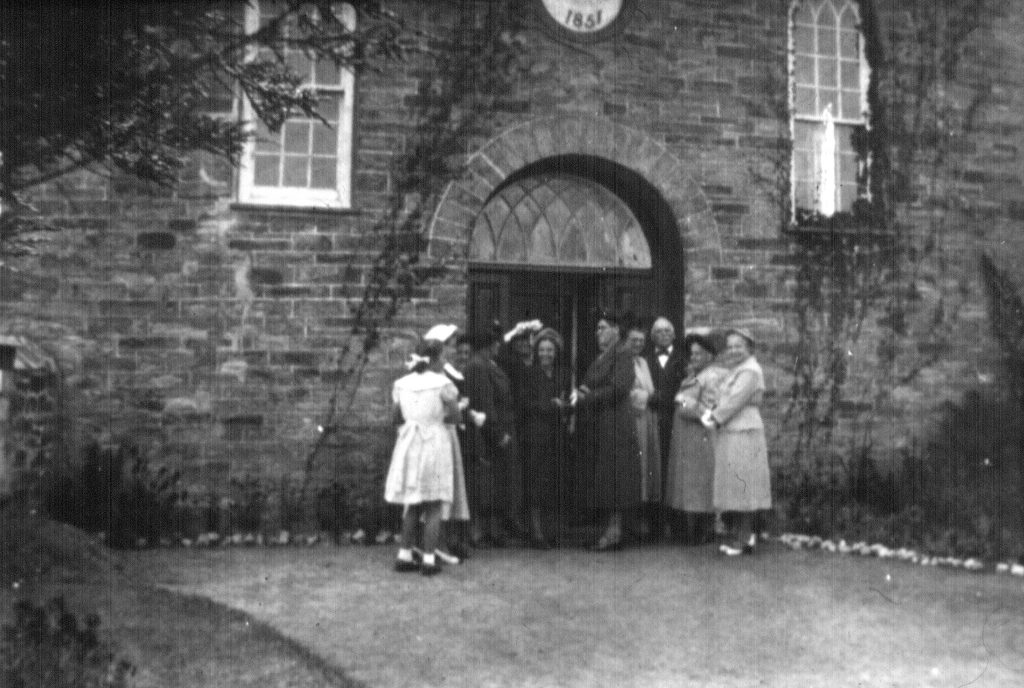
Mingoose is a hamlet near St Agnes. This profile of Mingoose Wesleyan Chapel has been compiled by Clive Benney & Tony Mansell.
1849: Mingoose Methodist Society formed.
1851: Mingoose Methodist Chapel built. (Cornwall Heritage Gateway / SWChurches)
Originally built as a Wesleyan chapel. (SWChurches)
Wayside Wesleyan chapel with later Sunday school at rear, now all converted to house, c 1970. Killas rubble walls with dressed stone round arches. Symmetrical 3-bay front end with round window over wide doorway. Original fanlight with intersecting glazing bars, replaced sashes now with horns. This chapel had rare original fittings prior to conversion; Clock, above internal lobby, signed ‘Walter Latcher, St Agnes’; Hat rails with wooden pegs-carried across side windows; Rostrum with panelled centre and balustraded sides and supported on four dwarf marbled columns. Leader’s pew in front of pulpit, box pews at sides and rear. Open backed benches in central area, divided in centre by a rail along axis of building. Listed, described and illustrated, in plan and exterior and internal photographs in Stell (b1). (Cornwall Heritage Gateway)
1898 – May: Included some of chapels for which the freehold had not been purchased; some were subsequently obtained while others remained under lease. (Leasehold Property Return for St Agnes Circuit) Others had no fixed expiry date and were based on the practice of linking them to people’s lives. Only two people were referred to for Mingoose: one was in Africa and the other was not known.
WWI: Sunday school closed because many of the leaders were away fighting in the war.
 Mingoose Chapel (Photo: courtesy Clive Benney)
Mingoose Chapel (Photo: courtesy Clive Benney)
 1913: Mingoose Wesleyan Tea Treat
1913: Mingoose Wesleyan Tea Treat
 Mingoose Chapel (Photo: courtesy Clive Benney)
Mingoose Chapel (Photo: courtesy Clive Benney)
1927: Sunday school re-opened with Eddie Tredinnick as Sunday school Superintendent. He was also Society Steward, Chapel Treasurer and a few other jobs to keep him busy.
 Mingoose Chapel (Photo: courtesy Clive Benney)
Mingoose Chapel (Photo: courtesy Clive Benney)
1932: The Wesleyan, Primitive Methodist and the United Methodist Church amalgamated to become the Methodist Church of Great Britain.
- Became Mingoose Methodist Church. (SWChurches)
1940: Seating for 150. (David Easton, Methodist Minister and historian)
The tea treat was held in July, in one of two fields below the Chapel, to which everyone returned after the procession from the Chapel to Towan Cross and back. A brass band and two people carrying the Sunday school banner always took the lead. At Christmas time the Sunday school party, complete with supper and games, was held in the schoolroom decorated for the occasion. Annual missionary meetings were another attraction and often the returning missionary arrived resplendent in some native costume or gave a lantern lecture on their work.
Mingoose is a small community, not far from St Agnes, and the tea treat was always a big day for the children there. The “West Briton” of the 30th June 1843 reports: “On Saturday last the annual festival of this school was held in a field belonging to Mr A Williams, kindly lent by that gentleman for the occasion. After parading the village accompanied by St Agnes Band, the children were regaled with tea and cake. The proceedings were closed by the Rev J Cullen who delivered a suitable address which was listened to with attention by all present.”
“As well as Mount Hawke, we went to Mingoose Chapel, now alas turned into a house. Their tea treat was held in Tredinnick’s field, it was a small event but always very special, surrounded as we were with warm safe happiness. Community service was very much to the fore then and a part of Cornish life which has carried on even into this day and age, and certainly tea treats were a prime example of how small communities with few material possessions gave everyone a day to remember for the rest of their lives.
At times, I feel sorry for children today who have so much, go all over the world, and probably at least once a week have something organised for them at great expense. Somehow, I feel that they will never experience the elation I felt at that once-a-year festival long ago. Happy days.” (Joy Stevenson)
WWII: Sunday school increase in numbers due to intake of evacuees.
1950s/1960s: Congregation dwindled.
1962 to 1965: Only Sunday school Anniversary and Harvest celebrations held, perhaps for two or three years.
1966: The church closed. (SWChurches)
Lease surrendered to the Enys’ Estate
1866-1970: Mingoose Methodist Chapel, St Agnes. Trust and Society accounts, 1927-1970; Harvest Festival accounts, 1954-1964; minutes concerning disposal of contents, 1966, 1970; collections register, 1927-1953; papers concerning surrender of lease to the Enys estate, 1965-1966; Centenary visitors book and poster, 1951; Trust and Society bank book, 1956-1966; Harvest Festival collecting book, 1941-1964; Chapel and Sunday School collecting books, 1942-1964, 1949-1959; Centenary collecting book and minutes, 1951; Band of Hope attendance register, 1881-1887; Sunday School account books, 1874-1969; Sunday School scholars verses recitation book, 1866-1875; Sunday School attendance registers, 1880-1887, 1893-1916, 1927-1964. (Kresen Kernow X1150)
1970s – early: Converted to dwelling.
